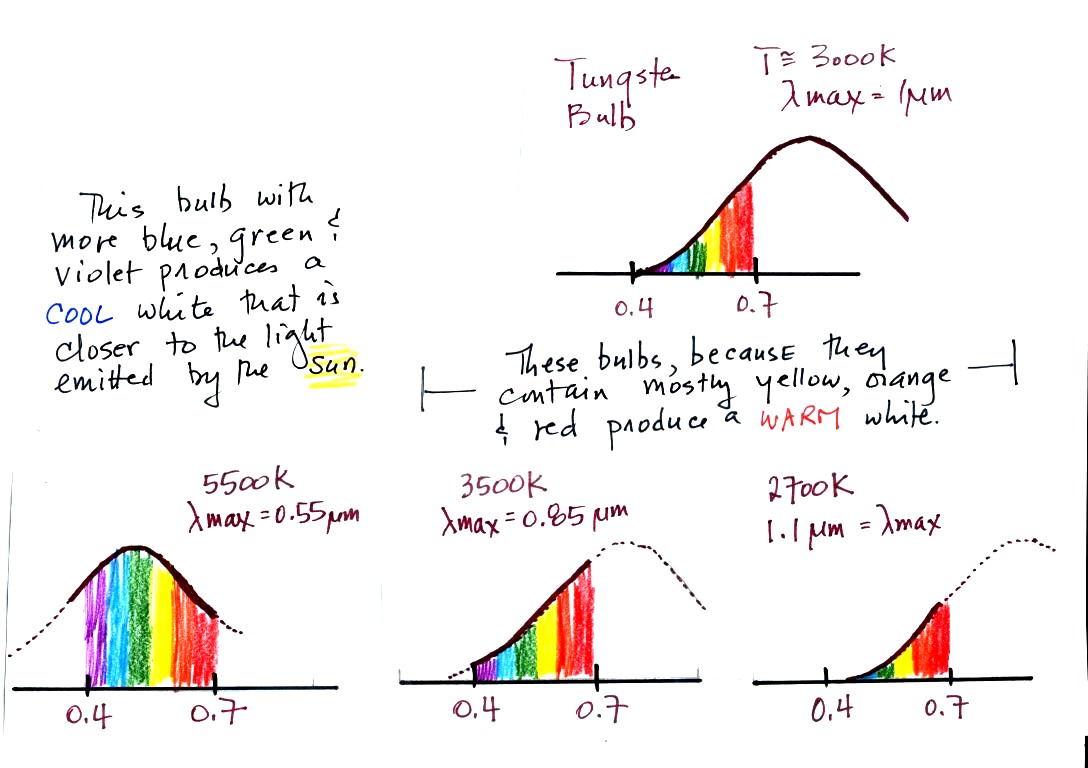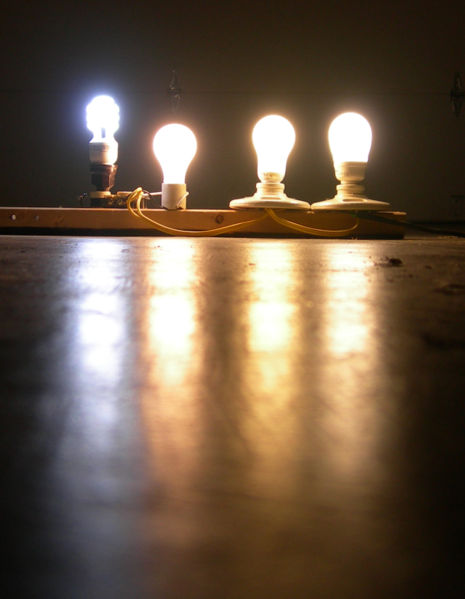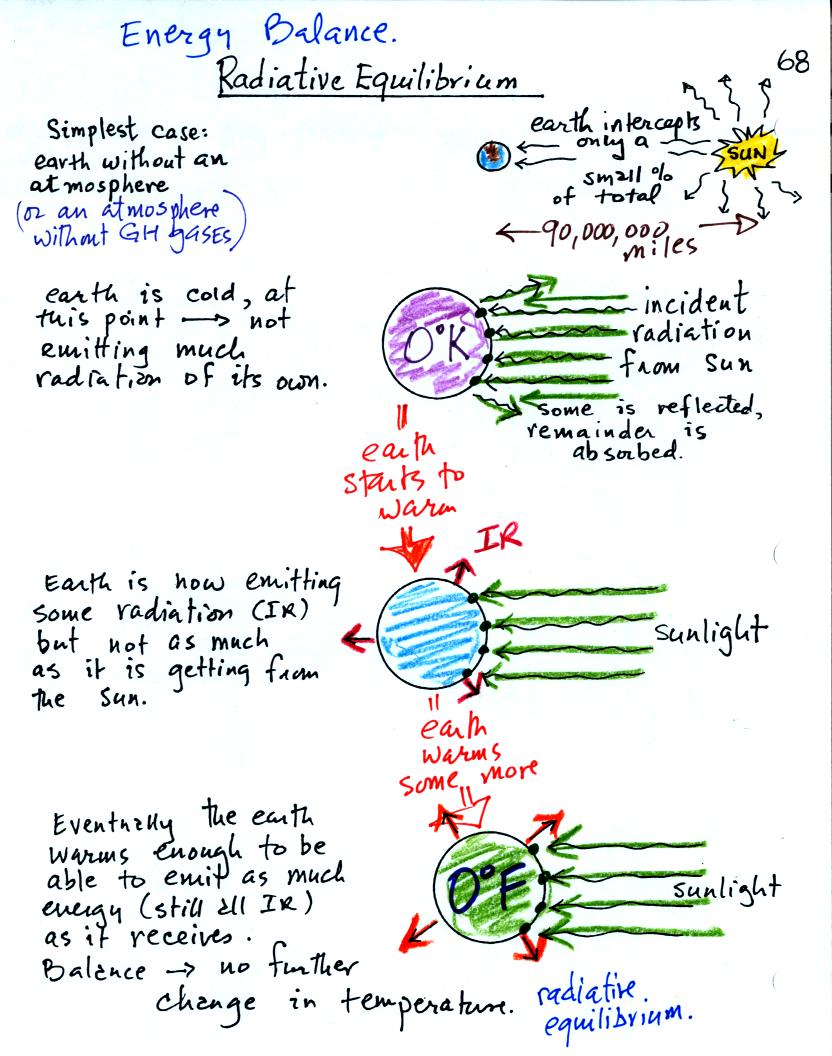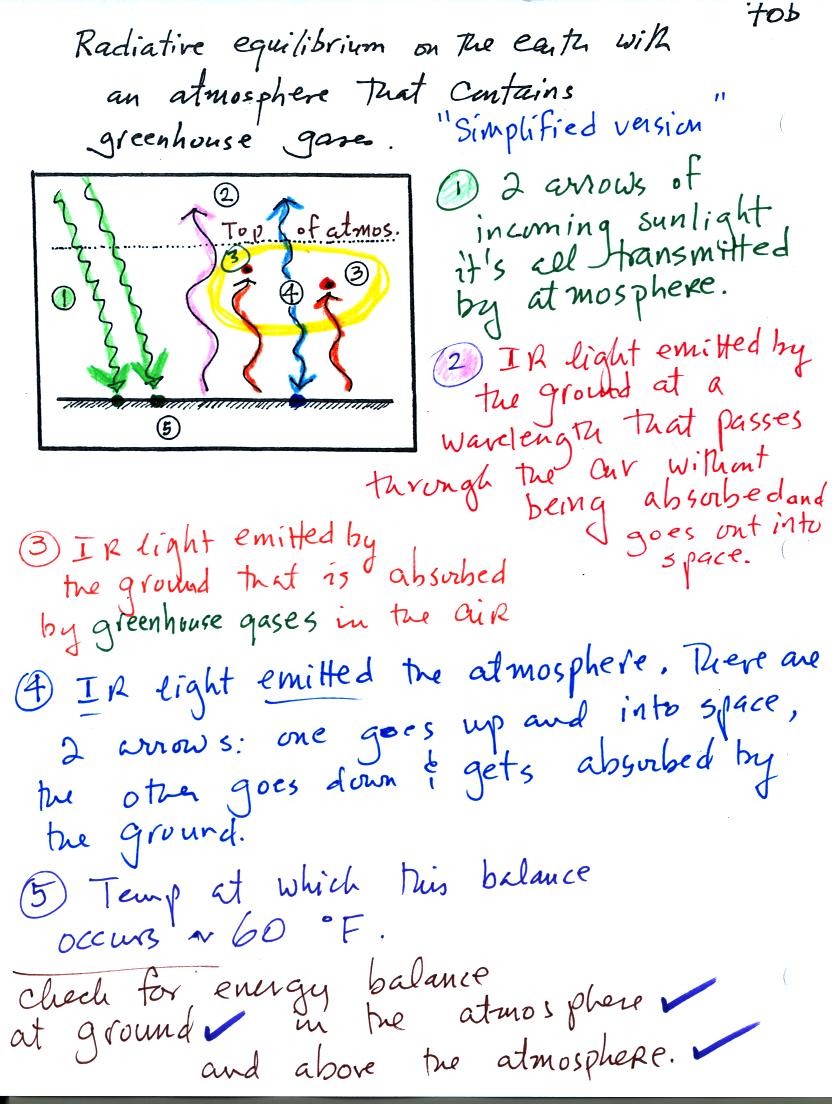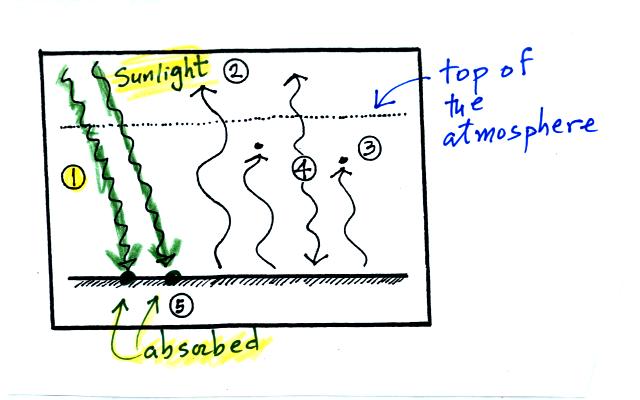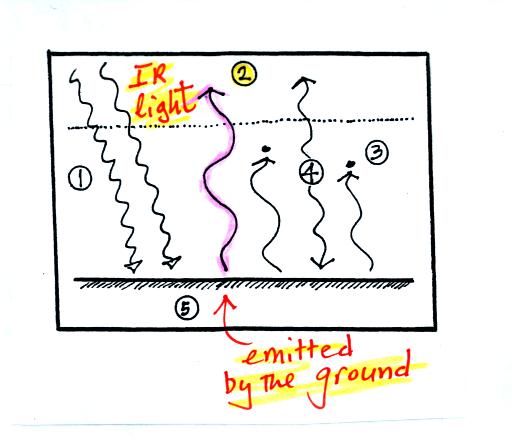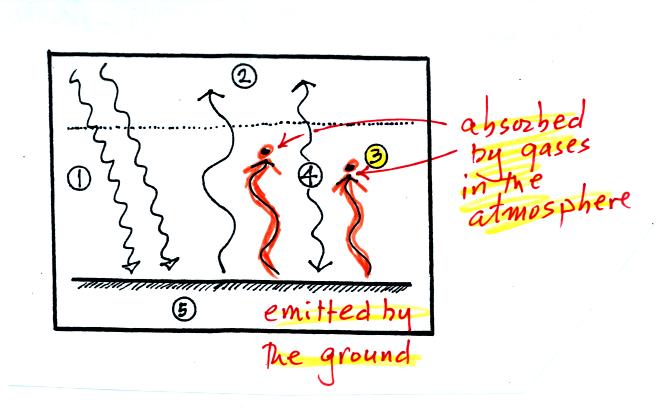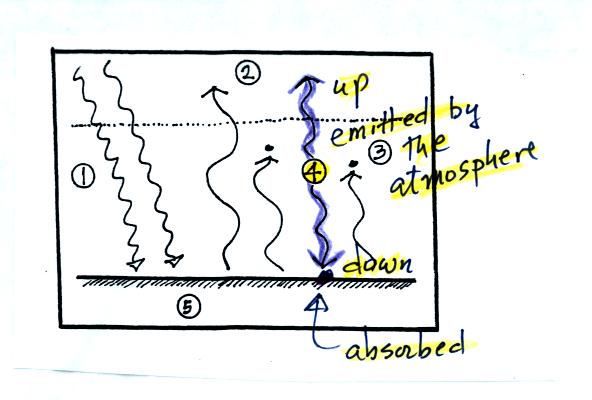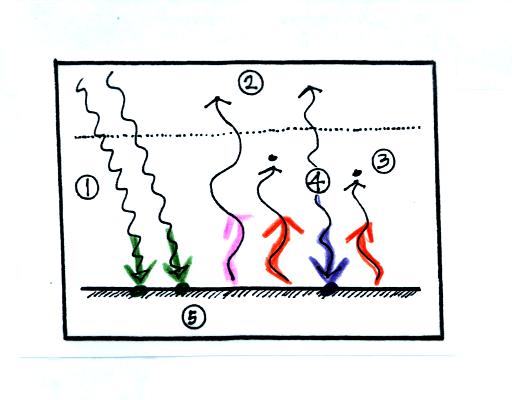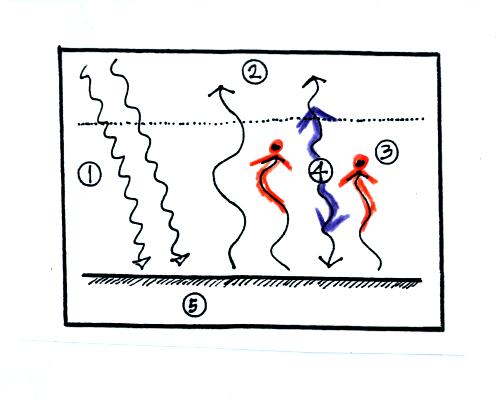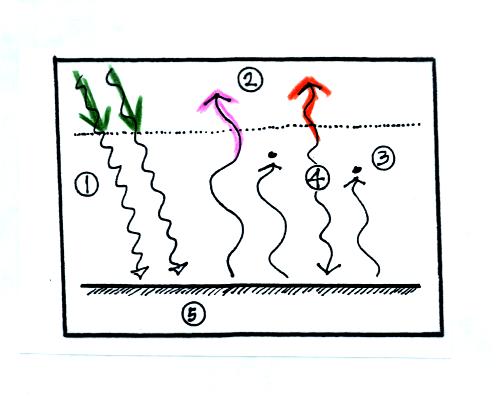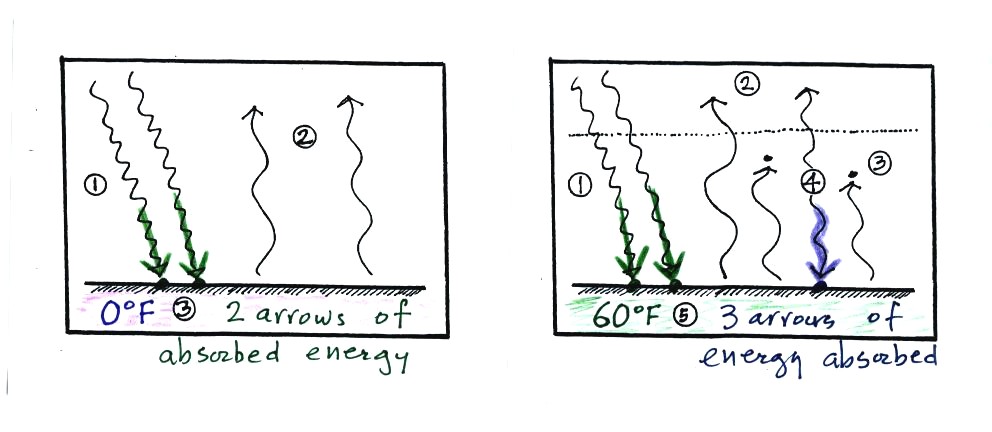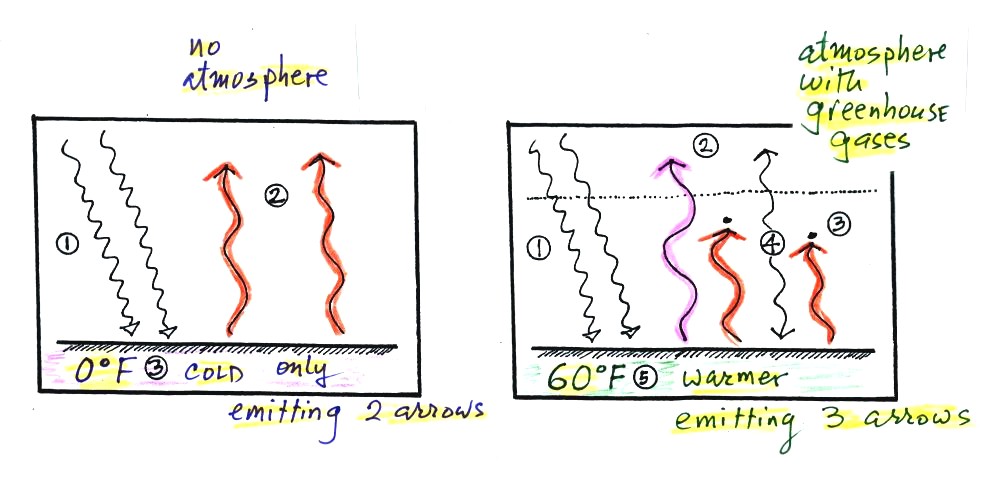
If you try to
shine white light (a
mixture of all the colors) through a
blue filter, only the blue light passes through. The filter
absorption curve shows 100% absorption at all but a narrow range of
wavelengths that correspond to blue light. The location of the
slot or gap in the absorption curve shifts a little bit with the green
and red filters.
The following figure is a simplified, easier to
remember,
representation of the
filtering effect of
the atmosphere on UV, VIS, and IR light (found on p. 69 in the
photocopied notes). The figure was redrawn after class.
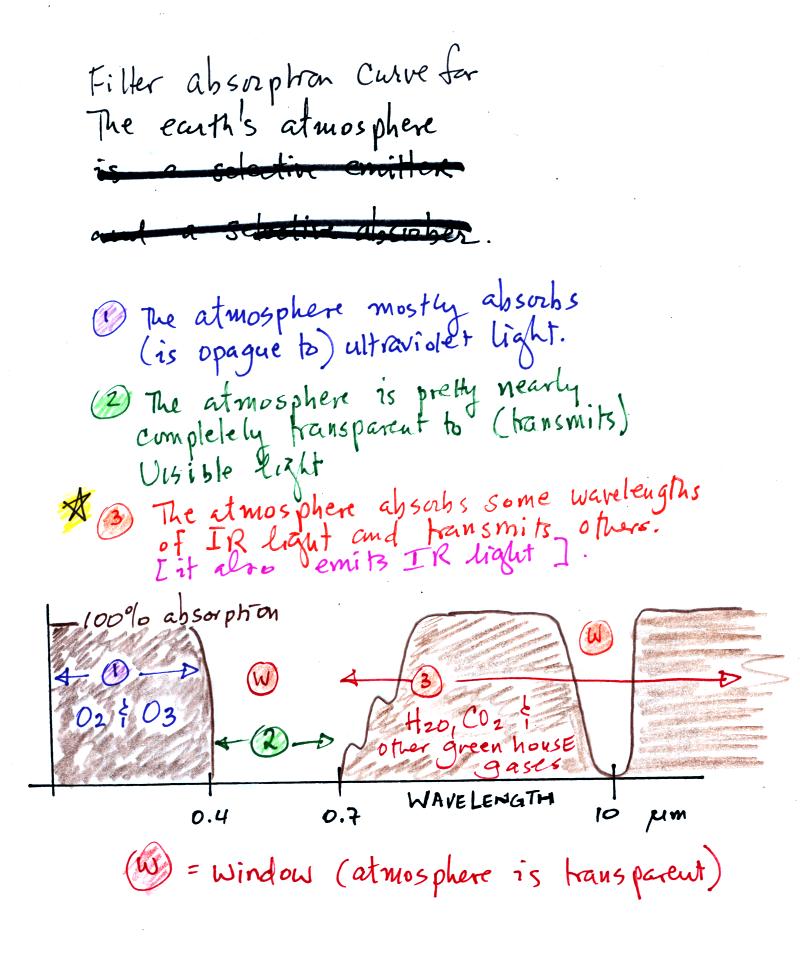
You can use your own eyes to tell
you what the filtering
effect of the
atmosphere is on visible light. Air is clear, it is
transparent. The atmosphere transmits visible light.
In our simplified representation oxygen and ozone make the
atmosphere pretty nearly completely opaque to UV light (opaque means
that light is blocked or absorbed; light can't pass through an opaque
material). We
assume that the
atmosphere absorbs all incoming UV light, none of it makes it to the
ground. This is of course not entirely realistic.
Greenhouse gases make the
atmosphere a
selective absorber of IR light - the air absorbs certain IR wavelengths
and
transmits others. It is the atmosphere's ability to absorb (and
also emit) certain wavelengths of infrared light that produces the
greenhouse effect and warms the surface of the earth.
Note "The atmospheric window"
centered at 10 micrometers. Light emitted by the earth
at this
wavelength (and remember 10 um is the wavelength of peak emission for
the earth) will pass through the atmosphere. Another transparent
region, another window, is found in the visible part of the spectrum.
You'll find a more realistic picture of the atmospheric absorption
curve on p. 70 in the photocopied Classnotes, but the simplified
version above will work fine for us.
Here's the
outer space view of radiative equilibrium on the earth without an
atmosphere. The important thing to note is that the earth is
absorbing and emitting the same amount of energy (4 arrows absorbed
balanced by 4 arrows emitted).

We will be moving from an outer
space vantage point of
radiative equilibrium (figure above) to the earth's
surface (figure below).
Don't let the fact that there are
4 arrows are
being absorbed and
emitted in the top figure and
2 arrows absorbed and emitted in the bottom figure
bother you. The important
thing is that there are equal
amounts being absorbed and emitted in both cases.
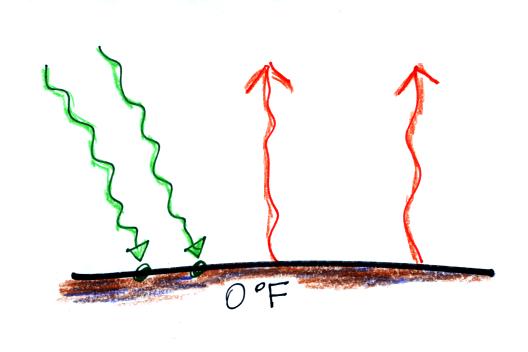
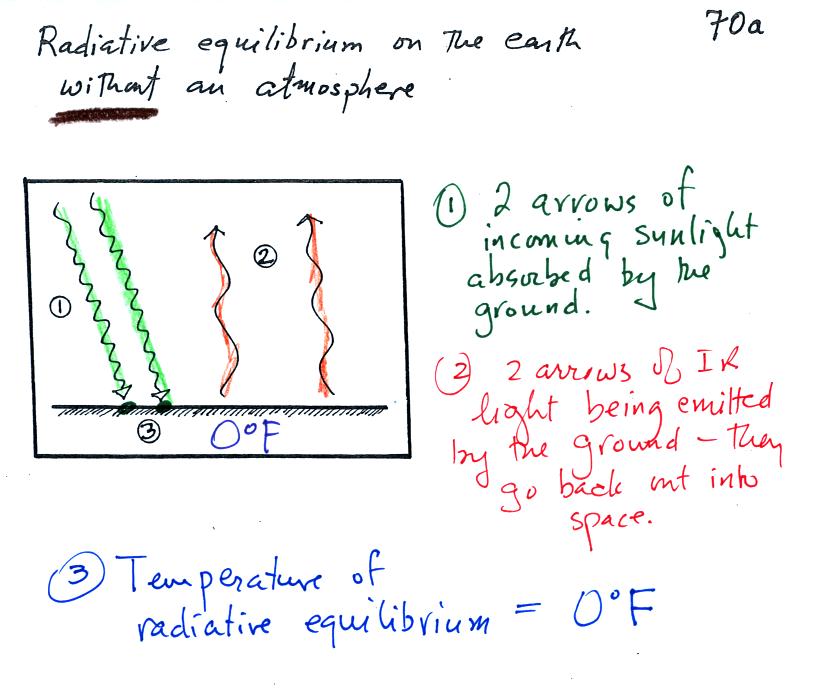
Here's the same picture with some
information added (p. 70a in the photocopied ClassNotes)
The next
step is to add the atmosphere.
We will study a simplified
version
of radiative equilibrium just so you
can identify and understand the various parts of the picture.
Keep an eye out for the greenhouse effect. Here's something close
to what
we ended up with in class (I gave the actual figure from class to a
student in the class).
It would be hard to sort through all of this if you weren't in
class
(and maybe even if you were) to see how it developed. So below we
will go through it again step by step (which you are free to skip over
if you wish). This is a little
more detailed version than was done in class. Caution:
some of the colors below are different
from used in class.
1. In this
picture we see the two
rays of incoming sunlight that
pass through the atmosphere, reach the ground, and are absorbed.
100% of the incoming sunlight is transmitted by the atmosphere.
This wouldn't be too bad of an assumption if sunlight were just visible
light. But it is not, sunlight is about half IR light and some of
that
is going to be absorbed. But we don't worry about that at this
point.
The ground is emitting
3 rays of IR radiation.
2. One
of
these
(pink
arrow
above)
is
emitted
by
the
ground at a wavelength
that is
NOT ABSORBED by greenhouse gases in the atmosphere (probably around 10
micrometers). This
radiation passes through the atmosphere and goes out into space.
3. The other 2
units of IR radiation emitted by
the
ground are
absorbed by
greenhouse gases is the atmosphere.
4. The
atmosphere is absorbing
2 units of radiation.
In order to be in radiative equilibrium,the atmosphere must also emit 2
units of radiation. 1
unit of IR radiation is sent upward into space, 1 unit is sent downward
to the ground where it is absorbed. This is probably the part of
the picture that most students have visualizing (it isn't so much that
they have trouble understanding that the atmosphere emits radiation but
that 1 arrow is emitted upward and another is emitted downward toward
the ground.
Before we go any further we will
check
to be sure that
every part
of this picture is in energy balance.
The ground is absorbing
3 units of energy (2 green
arrows of sunlight and one bluish arrow coming from the atmosphere) and
emitting
3
units of energy (one pink and two red arrows). So the ground is
in energy balance.
The atmosphere is
absorbing 2 units of energy (the 2
red arrows coming from the ground) and
emitting 2
units of
energy (the 2 blue arrows). The downward arrow goes all the way
to the ground where it gets absorbed (it leaves the atmosphere and gets
absorbed by the ground). The atmosphere is in energy balance.
And we should check to be sure equal amounts of energy
are arriving at and leaving the earth. 2 units of energy arrive
at the top of the atmosphere (green) from the sun after traveling
through space, 2 units
of
energy (pink and orange) leave the earth and head back out into
space. Energy balance here too.
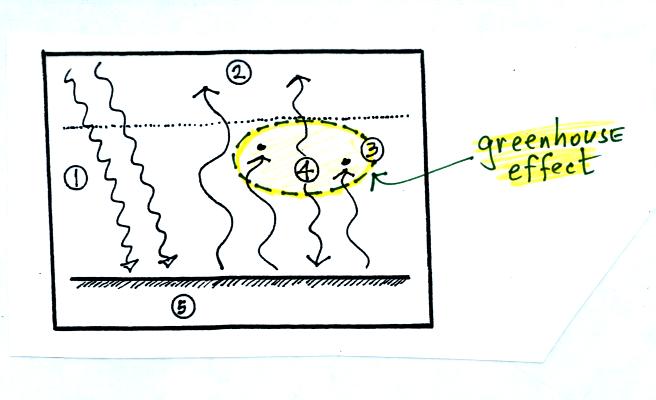
The greenhouse effect
is found in the absorption and
emission
of IR radiation by the atmosphere. Here's how you might put it
into words (close to but perhaps not exactly the same wording as in
class):
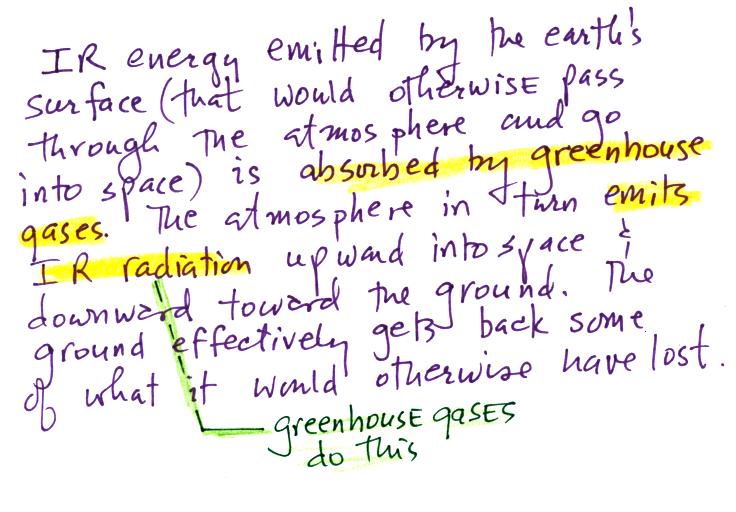
Doesn't it make sense that if the
ground is getting back some of
the energy it would otherwise lose, the ground will end up being
warmer. That's what the greenhouse effect does, it warms the
earth. The global annual average surface temperature is about 60
F on the earth with a greenhouse effect. It would be about 0 F
without the greenhouse effect.
Here are a couple other ways of understanding why this is
true.
The picture at left is
the earth without an atmosphere. At right the earth has an
atmosphere, one that contains greenhouse gases.
At left the ground
is getting 2 units of energy (from the sun). At right it is
getting three, two from the sun and one from the atmosphere (thanks to
the greenhouse effect).
Doesn't it seem
reasonable
that ground that absorbs 3 units of energy will be warmer than ground
that is only absorbing 2?
Here's another explanation of why the ground is warmer with a
greenhouse effect than without.
At left the ground is emitting 2 units of energy, at
right the ground is emitting 3 units. Remember that the amount of
energy emitted by something depends on temperature. The ground
in the right picture must be warmer to be able to emit 3 arrows of
energy rather than 2
arrows. It is able to emit 3 arrows of energy even though it only
gets 2 arrows of sunlight because it is able to get a 3rd arrow of
energy from the atmosphere.
